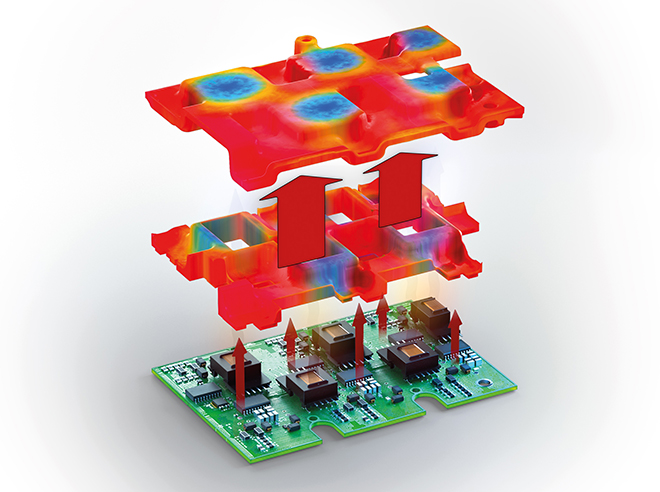Engineers at Freudenberg Sealing Technologies have developed an elastomer that merges relatively high heat capacity with electrically insulating properties by combining silicone rubber with special fillers. Electronic components can be mounted in a thermally conductive aluminum housing, which dissipates heat through cooling water or convection.
Senior Application Manager Armin Striefler explains why Freudenberg decided to use silicone as the base material: “Our material retains its properties over a very high temperature range, from -50 to +250° C, but it can be deformed with relatively low force.”
When sprayed on a metal surface, it fills the tiny gaps caused by roughness, which the company says improves heat transfer and enables adhesion without additional surface treatments. The material has a dielectric strength of at least 20 kV/mm. Adding the fillers increases the heat conductivity from 0.2 to 1.5 to 2 W/mK. By comparison, air has a heat conductivity of 0.026 W/mK under normal conditions.
The first application for this new material class could lie in EV charging sockets, allowing temperature sensors to be electrically shielded. The material can also be applied to the targeted cooling of control units, such as those used to switch the current between the EV battery and drivetrain. Car manufacturers are currently testing an initial application in charging sockets with integrated sensors and battery control units.
During rapid charging, or when high performance is required while driving, the busbars used to connect battery modules and power electronics produce waste heat. Freudenberg is working on a module in which the thermally conductive silicone dissipates the waste heat from the busbars directly to the housing or a heat sink. The company says this could reduce the conductor cross-sections so that only about half of the normally used copper would be required. The first functional prototypes are expected to be tested this year.
“We’re still in the beginning stages of applying the thermally conductive elastomers,” said Technical Director Joachim Heinemann. “But we can already see that the combination of thermal conductivity and electrical insulation has great potential to make future generations of electric cars more efficient.”
Source: Freudenberg


















































































